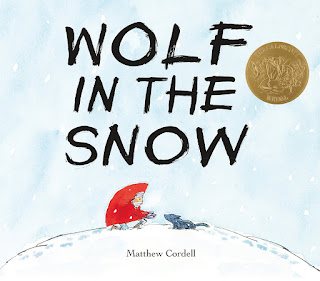Wolf In Snow Review

The newest Caldecott winner, Wolf in the Snow, is a wonderful visual narrative that uses a variety of visual image to depict the story of a young girl lost in the snow and helped by wolves to return home safely. The book is a traditional home-away-home narrative that depicts the adventures and turmoils of a little girl that wanders out in the snow. The opening of the book has several pages of illustrations that appear before the title page - an interesting thing to point out to young readers! In addition there is an opening and closing image that depicts the family through the portal of a living room window. This portal serves to open the narrative and come the story. Delightful images in watercolor and ink create a lovely picturebook worth sharing with young readers. Here are some reviews of the book on Goodreads https://www.goodreads.com/book/show/29102937-wolf-in-the-snow?from_search=true Some information about the Author-Illustrator: Matthew Cordell is ...

